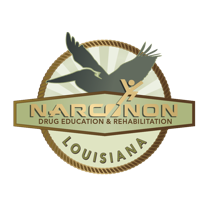Alcoholism - Terrible Disorder
Alcoholism
 Alcoholism is a terrible disorder that affects the lives of everyone it touches. It is described as an uncontrollable obsession of the mind despite the down side effects of the person’s health, relationships with those around them, and social standing. The term alcoholism was first coined in 1849 by Magnus Huss, but during the 1980’s in the DSM III, the term was replaced through the concept of alcohol dependency and abuse. In the early 19th and 20th century, alcohol dependency was actually called dipsomania. And similarly in the 1979, the World Health Organization committee disapproved the term alcoholism as a diagnostic entity and preferred it as alcohol dependence syndrome.
Alcoholism is a terrible disorder that affects the lives of everyone it touches. It is described as an uncontrollable obsession of the mind despite the down side effects of the person’s health, relationships with those around them, and social standing. The term alcoholism was first coined in 1849 by Magnus Huss, but during the 1980’s in the DSM III, the term was replaced through the concept of alcohol dependency and abuse. In the early 19th and 20th century, alcohol dependency was actually called dipsomania. And similarly in the 1979, the World Health Organization committee disapproved the term alcoholism as a diagnostic entity and preferred it as alcohol dependence syndrome.
The biological mechanisms or triggers for alcoholism are not fully understood, but risk factors include stress, mental health, social environment, age, ethnic background, and sex. Through long term use, alcoholism causes physiological changes in the human brain like physical dependence and tolerance. With brain chemistry changes, there is an inability to stop drinking and could result in alcohol withdrawal syndrome once the person stops drinking. Including the brain, alcohol damages every organ in the body due to the cumulative toxic effects.
Long term use of alcohol causes a bevy of physical symptoms like cirrhosis of the liver, pancreatitis, polyneuropathy, alcoholic dementia, epilepsy or seizures, heart disease, nutritional deficiencies, sexual dysfunction, and ultimately death. Other physical effects from drinking alcohol include malabsorption, cardiovascular disease, alcoholic liver disease, and cancer. There can also be damage to the central nervous system and the peripheral nervous system.
It has been shown that women develop long term complications faster than men do. And women also show to have a higher fatality rate than alcoholic men. Examples of long term effects from alcoholism in women include brain damage, heart damage, liver damage, and an increased risk for breast cancer. This causes reproductive dysfunction like anovulation, a decrease in ovarian mass, irregularity of the menstrual cycle, and early menopause. Binge drinkers can also produce alcoholic ketoacidosis.
There are serious social problems that stem from alcoholism. The abuse of alcohol has statistically shown an increased risk of committing criminal offenses like child abuse, rape, domestic violence, theft, and assault. Even though many alcoholics are in denial about their addictions, alcoholism is always associated with unemployment. It is often heard that people can be functioning addicts but this is nothing more than fooling one’s self to continue drinking. There is no such thing as a functioning addict. Unemployment eventually leads to financial problems. Drinking during inappropriate times causes a reduction in judgment, can lead to legal consequences like drunk driving or public disorder, civil penalties for tortuous behavior, and could ultimately lead to a criminal sentence. The alcoholic’s behavior and mental impairments while being drunk can affect those around them and lead to isolation and separation from family and friends. This isolation can lead to marital conflict, divorce, or domestic violence. Alcoholism can also lead to child neglect, which could damage the emotional development of the alcoholic’s child.
Narconon provides effective treatment for alcoholism.
Alcohol is basically in the same class as sedative hypnotics like barbiturates of the 1960s and 1970s and the benzodiazepines currently used today. Withdrawal from alcohol dependence can be fatal if an improper method of detox is taken. Alcohol’s primary effect is due to the increase in stimulating the GABA receptor which promotes central nervous system depression. With heavy drinking, these GABA receptors become desensitized and causes a reduction in the number of receptors available which ultimately leads to tolerance and physical dependency. If alcohol consumption is immediately stopped for an alcoholic, the person’s nervous system may suffer anxiety, restlessness, life threatening seizures, delirium tremens, hallucinations, shakes, and heart failure. The acute effects from alcohol withdrawal typically subside in one to three weeks.
Social stereotypes and attitudes can create social barriers for detecting and treating alcoholism. But there are many symptoms to look for in an alcoholic. The inability to limit the number of drinks consumed, feeling a strong need to drink, developing tolerance, legal problems through relationships, employment, and lack of finances, drinking alone or in secret, suffer withdrawals like nausea, sweating, shaking when not drinking, black outs, having rituals for when and where you drink, a loss of interest to hobbies that used to make you happy, irritability, hiding alcohol in places around the house, gulping drinks to become intoxicated to feel normal.
There is not much one can say to an alcoholic to stop drinking. The addict doesn’t want to hear anything however there are some things you can do. It is imperative to verbalize your intentions to an alcoholic. The key is YOUR intentions and not verbalizing demands to change the alcoholic’s behavior. It is merely what you intend to do given the drinking or behaviors. If you don’t intend to continue associating with this person, then set a limit. The limit should be for you and not the alcoholic. It is critical to have a firm limit with actionable consequences.
There is no magical way of changing a person’s bad behavior by yourself. Alcoholism is not logical. That is why alcoholic will not listen to you or reason. Reasoning with an alcoholic is pointless. They will not hear your battle plans or well planned arguments about why they should stop drinking or live a better life. One can promise the alcoholic the world and all the wonderful things in it. But none of it will matter one bit they feel trapped and stuck. They can’t hear your arguments. Those drinkers that began on their own at a very young age or an older age tend to be more prone to drinking problems. This is based on the fact that people that fit in these categories tend to be more deviant. Alcoholism is one of the toughest addictions to battle in this world. This drug is socially acceptable and literally everywhere you go. It is for sale at grocery stores, restaurants, convenient stores, and everywhere else you travel. Credit must be given to those battling an addiction to alcohol.
